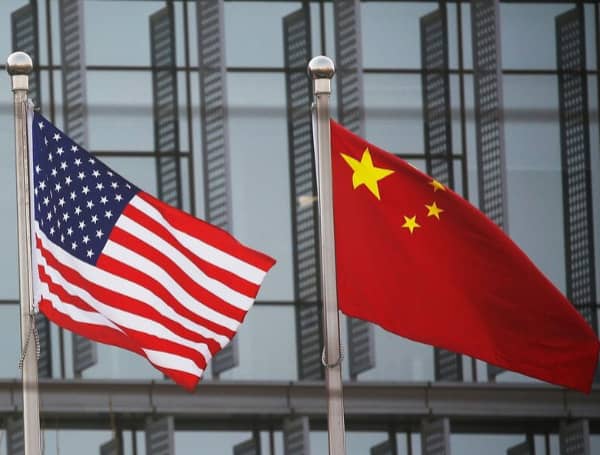Photo Source: Liu Pengyu, Spokesperson of Chinese Embassy in the U.S. By Micaela Burrow, DCNF. China is rapidly closing the gap in critical submar
China is rapidly closing the gap in critical submarine capabilities that challenge decades of unmitigated U.S. dominance in the deep sea and could have critical implications in a Taiwan scenario, The Wall Street Journal reported.
In 2023, China put to sea a nuclear-powered attack submarine equipped for the first time with a noise-reducing pump-jet propulsion system, marking a major advance in submarine technology to match the way the U.S. equips its own submarines, the WSJ reported.
The quieting systems will allow them to evade detection by American submarines and patrol aircraft, while construction on an “underwater great wall” of complex sensors will allow China to identify incoming enemy assets, Chinese military and academic texts say.
Read: 2024 GOP Presidential Hopefuls Lay Out Plans To Bolster The Navy
“The implications for the U.S. and our Pacific allies will be profound,” Christopher Carlson, a former U.S. Navy officer, told the WSJ.
The Chinese People’s Liberation Army (PLA) submarine expansion means the U.S. will need more patrol aircraft and attack submarines in the Indo-Pacific theater to locate, track and target Chinese submarine targets, Carlson said.
Chinese nuclear-powered attack submarines could be assigned on hunter-killer missions to target U.S. and allied submarines in the Taiwan Strait, increasing the difficulty of coming to Taiwan’s defense, Brent Sadler, a naval expert at the Heritage Foundation, told the WSJ. Simulations direct U.S. military intervention during a Chinese invasion of Taiwan generally assume U.S. submarines would operate near the strait to find and sink PLA warships.
Currently, China has six nuclear-powered attack submarines in addition to a diesel-electric variety developed through reverse engineering submarines purchased from the Soviet Union, the WSJ reported.
Given China’s massive shipbuilding capacity, Carlson predicted China could produce nuclear-powered submarines at triple the U.S. production rate once it decides on the next design, according to the WSJ.
Read: Florida Gov. Ron DeSantis Denounces Anti-Semitism ‘Across The Board’
The Pentagon’s latest report on Chinese military power said China had 60 attack and ballistic-missile submarines by the end of 2022 and could operate up to 80 by 2035.
Gen. Antony Cotton told Congress in March that China had equipped its existing ballistic missile submarines with new missiles capable of reaching the U.S. mainland while the submarines remain close to China, the WSJ reported.
It was an honor to speak to the Naval Submarine League’s symposium last week about my fight to support submarine construction. We need to beat China and hiring American workers to build our next-generation fleet is the first step. pic.twitter.com/SuRWwKhfZi
— Senator Roger Wicker (@SenatorWicker) November 16, 2023
China may not confirm a final design for the next generation of nuclear-powered submarines for years; the nuclear-powered vessel revealed earlier in 2023 could just be the latest prototype in a long development period going through multiple stages, according to the WSJ.
U.S. Virginia-class submarines and the planned Columbia-class submarines are at least a generation ahead of the most advanced Chinese submarine, analysts say, according to the WSJ.
However, China could exploit its advantage in tonnage and proximity to the mainland in any conflict scenario, straining the U.S. military’s resources and ability to track Chinese naval assets.
Read: Questions Arise About Media Claims Of Florida Gov. DeSantis’ Illegal Immigration “Problem”
China’s growing underwater sensor network in the East China Sea and South China Sea also negate some of U.S. submarines’ stealth advantage, Bryan Clark, a researcher at the Hudson Institute, told the WSJ. The U.S. will have to develop a new strategy to confuse or evade the sensors, he said.
The Department of Defense did not immediately respond to the Daily Caller News Foundation’s request for comment.
Android Users, Click To Download The Free Press App And Never Miss A Story. Follow Us On Facebook and Twitter. Signup for our free newsletter.
We can’t do this without your help; visit our GiveSendGo page and donate any dollar amount; every penny helps

